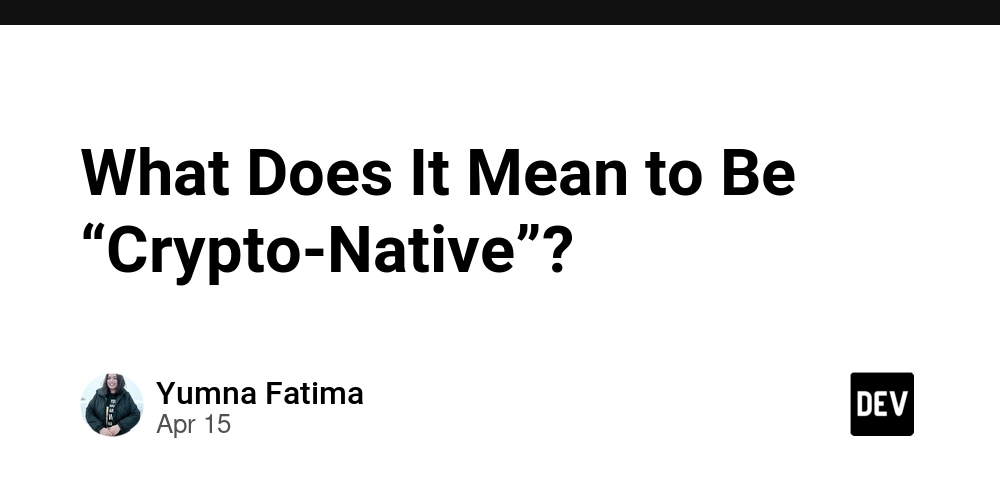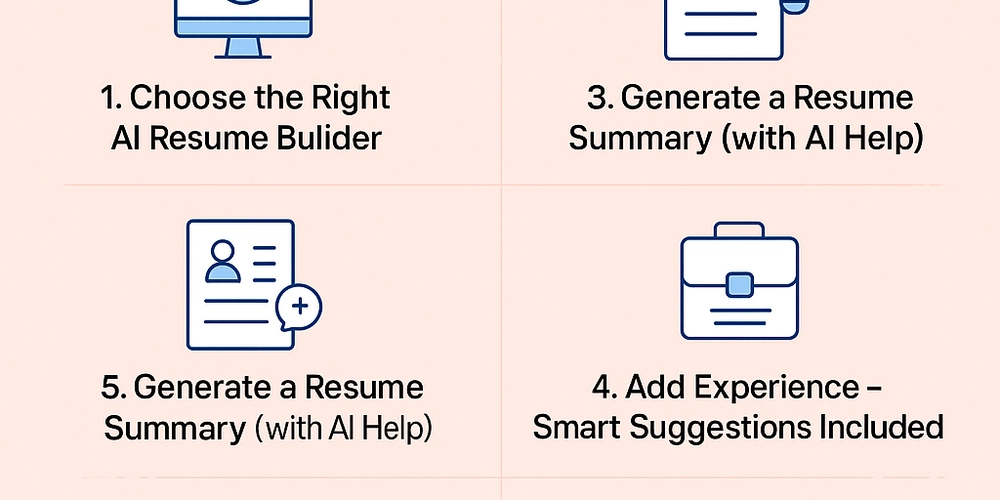What Does It Mean to Be “Crypto-Native”?
In crypto circles, you’ve probably heard the term “crypto-native” thrown around a lot. It sounds cool. It feels exclusive. But what does it actually mean—and why does it matter, especially for builders and devs in Web3? Let’s break it down. Crypto-Native: Defined Being crypto-native doesn’t just mean you own Bitcoin or have a MetaMask wallet. It’s a mindset, a design philosophy, and in many ways, a way of life within the Web3 ecosystem. A crypto-native user or product is: Built on or for decentralized infrastructure Understands and embraces the trustless, permissionless ethos of Web3 Optimized for on-chain interactions (vs retrofitting Web2 paradigms) Comfortable with tokens, gas fees, wallets, and DAOs Think of it like this: Traditional = Fiat rails → Web2 UX → Optional crypto Crypto-native = Blockchain-first → Web3 UX → On-chain by default What Makes a Developer Crypto-Native? If you're crypto-native as a developer, you probably: Think in wallets, keys, and contracts instead of emails and passwords Know how to deploy or interact with smart contracts on chains like Ethereum or Solana Use IPFS or Arweave for storage, ENS for naming, and maybe even Rollups/ZK tech for scaling Consider tokenomics as part of your product design—not an afterthought You’re building with crypto primitives, not around them. Common Mistakes by Non-Crypto-Natives Not every product needs to be fully on-chain—but trying to “Web2-ify” crypto-native spaces often leads to friction. Here are a few common traps: Forcing KYC in dApps → alienates privacy-minded users Custodial wallets only → defeats the “not your keys” ethos Gasless UX with zero transparency → hurts education & sovereignty Rug-pull tokenomics → kills community trust Crypto-natives value openness, ownership, and composability. Violating that vibe? You’ll likely get roasted on Crypto Twitter. Why It Matters in 2025 Crypto is maturing. The next wave of users might come through UX-optimized, custodial apps. But under the hood, crypto-native infra is still the backbone—and those who understand it will shape the future. Whether you're: Building the next DAO tool Launching an L2 dApp Designing tokenomics for your game Contributing to a DeFi protocol …being crypto-native gives you a huge edge.

In crypto circles, you’ve probably heard the term “crypto-native” thrown around a lot.
It sounds cool. It feels exclusive. But what does it actually mean—and why does it matter, especially for builders and devs in Web3?
Let’s break it down.
Crypto-Native: Defined
Being crypto-native doesn’t just mean you own Bitcoin or have a MetaMask wallet. It’s a mindset, a design philosophy, and in many ways, a way of life within the Web3 ecosystem.
A crypto-native user or product is:
- Built on or for decentralized infrastructure
- Understands and embraces the trustless, permissionless ethos of Web3
- Optimized for on-chain interactions (vs retrofitting Web2 paradigms)
- Comfortable with tokens, gas fees, wallets, and DAOs
Think of it like this:
- Traditional = Fiat rails → Web2 UX → Optional crypto
- Crypto-native = Blockchain-first → Web3 UX → On-chain by default
What Makes a Developer Crypto-Native?
If you're crypto-native as a developer, you probably:
- Think in wallets, keys, and contracts instead of emails and passwords
- Know how to deploy or interact with smart contracts on chains like Ethereum or Solana
- Use IPFS or Arweave for storage, ENS for naming, and maybe even Rollups/ZK tech for scaling
- Consider tokenomics as part of your product design—not an afterthought
You’re building with crypto primitives, not around them.
Common Mistakes by Non-Crypto-Natives
Not every product needs to be fully on-chain—but trying to “Web2-ify” crypto-native spaces often leads to friction. Here are a few common traps:
- Forcing KYC in dApps → alienates privacy-minded users
- Custodial wallets only → defeats the “not your keys” ethos
- Gasless UX with zero transparency → hurts education & sovereignty
- Rug-pull tokenomics → kills community trust
Crypto-natives value openness, ownership, and composability. Violating that vibe? You’ll likely get roasted on Crypto Twitter.
Why It Matters in 2025
Crypto is maturing. The next wave of users might come through UX-optimized, custodial apps. But under the hood, crypto-native infra is still the backbone—and those who understand it will shape the future.
Whether you're:
- Building the next DAO tool
- Launching an L2 dApp
- Designing tokenomics for your game
- Contributing to a DeFi protocol …being crypto-native gives you a huge edge.




























![[Webinar] AI Is Already Inside Your SaaS Stack — Learn How to Prevent the Next Silent Breach](https://blogger.googleusercontent.com/img/b/R29vZ2xl/AVvXsEiOWn65wd33dg2uO99NrtKbpYLfcepwOLidQDMls0HXKlA91k6HURluRA4WXgJRAZldEe1VReMQZyyYt1PgnoAn5JPpILsWlXIzmrBSs_TBoyPwO7hZrWouBg2-O3mdeoeSGY-l9_bsZB7vbpKjTSvG93zNytjxgTaMPqo9iq9Z5pGa05CJOs9uXpwHFT4/s1600/ai-cyber.jpg?#)













































































































































![[The AI Show Episode 144]: ChatGPT’s New Memory, Shopify CEO’s Leaked “AI First” Memo, Google Cloud Next Releases, o3 and o4-mini Coming Soon & Llama 4’s Rocky Launch](https://www.marketingaiinstitute.com/hubfs/ep%20144%20cover.png)




































































































































































































![Rogue Company Elite tier list of best characters [April 2025]](https://media.pocketgamer.com/artwork/na-33136-1657102075/rogue-company-ios-android-tier-cover.jpg?#)








































































_Andreas_Prott_Alamy.jpg?width=1280&auto=webp&quality=80&disable=upscale#)




























































































![What’s new in Android’s April 2025 Google System Updates [U: 4/18]](https://i0.wp.com/9to5google.com/wp-content/uploads/sites/4/2025/01/google-play-services-3.jpg?resize=1200%2C628&quality=82&strip=all&ssl=1)










![Apple Watch Series 10 Back On Sale for $299! [Lowest Price Ever]](https://www.iclarified.com/images/news/96657/96657/96657-640.jpg)
![EU Postpones Apple App Store Fines Amid Tariff Negotiations [Report]](https://www.iclarified.com/images/news/97068/97068/97068-640.jpg)
![Apple Slips to Fifth in China's Smartphone Market with 9% Decline [Report]](https://www.iclarified.com/images/news/97065/97065/97065-640.jpg)


































































































































